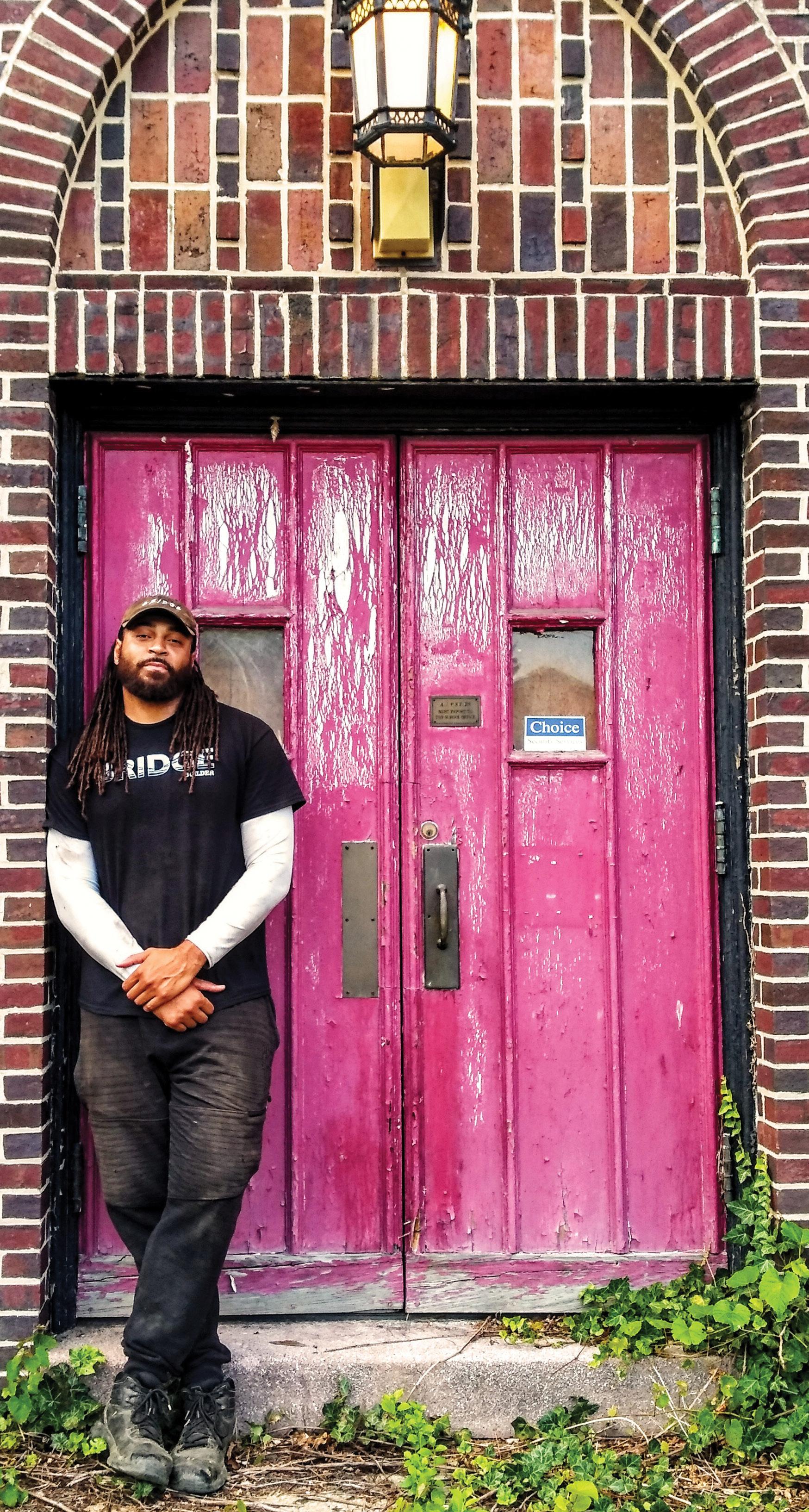
7 minute read
HBGMAG INFLUENCER
It Takes a Village: The Man behind Harrisburg’s Upcoming EcoVillage, The Bridge.
Story & Photos by Paul Hood
Placed within the side of a grassy hill overlooking Market Street, it has sat empty for years all while remaining majestic, yet imposing and grand in scale. Its two noticeable towers - one near the western end of the city and the other near the eastern end - scrape the sky and appear weather beaten as the elements have gracefully aged its brick facade. It is the former home of Bishop McDevitt High School, which during its 70-year tenure at Market Street, was - and still is, respectfully - Harrisburg’s most well-known private Catholic school. Founded in 1918, Bishop McDevitt (renamed in 1957 after Reverend Phillip R. McDevitt) established itself as a reputable educational institution noted mostly by locals for churning out spectacular student athletes turned NFL stars, such as natives Ricky Waters and LeSean “Shady” McCoy.
Fast forward almost a decade later, and yet another ex-NFL player, Garry Gilliam, who splits his time between Seattle and Camp Hill and is Harrisburg Magazine’s “Influencer’’ for the month of August, is on track to revive old Bishop McDevitt School into a self-sustainable eco-village known as The Bridge. But brass tacks first: Gilliam, Founder and CEO of The Bridge, is listed at 6’6” and approximately 300 lbs. and fresh off stints with the Seattle Seahawks and San Francisco Forty Niners. A once undrafted rookie who spent his college career at Penn State as a triple major in business, advertising and psychology, Gilliam has a vision to match his physical size. A certified juggernaut of ideas and moxy, Gilliam is full speed ahead with reshaping Harrisburg’s stagnancy regarding urban redevelopment and repurposing of iconic structures. With major plans already taking the field, The Bridge is set to become Harrisburg’s first of a kind community complete with entertainment, housing, and
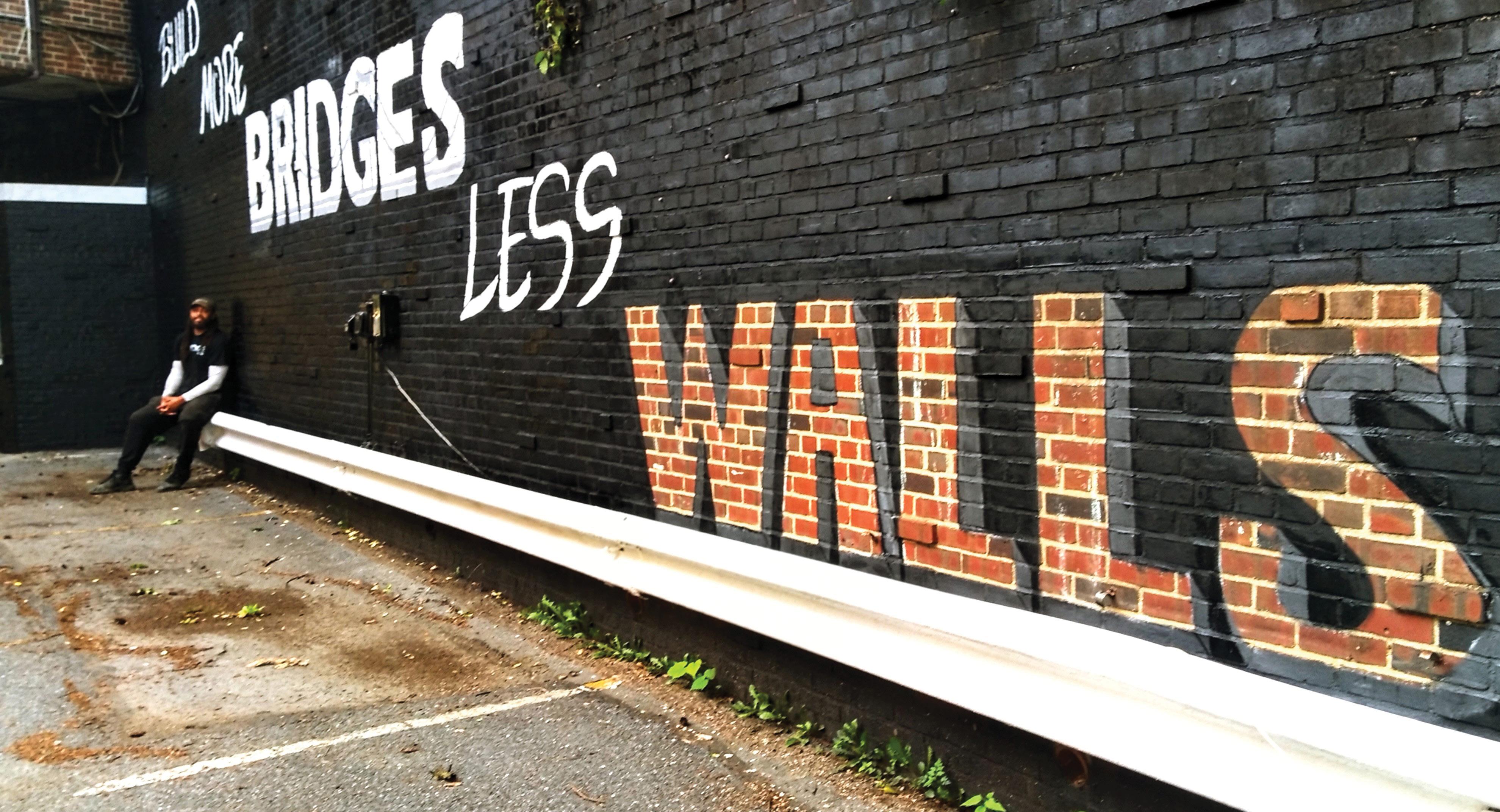
a “Giant Bleacher Garden’’: a conversion which involves the removal of stability in an often-overlooked section of Harrisburg - an undertaking old bleachers in McDevitt’s legendary football field known to locals as far more complex and lengthy than just a crafty rehab of an old structure. “The Brickyard.” Sponsored by The Giant Company and Empower at The “With Milton Hershey offering those wrap-around and self-sufficiency Bridge Foundation, the ambitious project (already underway) will provide programs so the students could be the best versions of themselves, I fresh produce to underserved residents in the city of Harrisburg. knew I had to take my knowledge and educational background a step
To say that The Bridge founder and CEO Garry Gilliam is confident is further and do something beneficial for my community.” an understatement. He speaks with a sense of ease and assurance that Armed with a well-rounded education and athletic ability, the former immediately demands attention. Perhaps his confidence and can-do Penn State Nittany Lion offensive lineman brings to Harrisburg the spirit, instilled in him at an early age by his mother, Thelma Shifflet, is grassroots spirit and ideas he siphoned from playing football in cities the reason Gilliam has taken on an immense project slated to fill a void like San Francisco and Seattle, a regional hotbed for technology and in the city of Harrisburg. A proud graduate of Milton Hershey School, innovation. That, combined with the lessons Gilliam learned about Gilliam reflects on how he first struggled with his mother’s decision to Milton S. Hershey himself from his time at MHS as well as Penn enroll him at MHS and how many nights he cried himself to sleep. “I State University, shuttles his determination. “I’m very grateful for had to grow up fast,” says Gilliam, who credits his mother’s tough-love the environment I come from,” Gilliam said. When asked when the approach to his confidence and drive and how he quickly discovered idea was planted and then began its germination process, Gilliam MHS was more than an average boarding school, “When I first got there talks about how much he admires Milton Hershey’s vision for offering [Milton Hershey] I actually tried to take off. But I was told by MHS staff children opportunities in fields like carpentry and graphic design. “As they were my family now,” said Gilliam. “It had taken some time, but I I was looking around the area,” Gilliam begins, “I began to wonder quickly realized the sacrifice my mother had to make in order for me to to myself: where are the other towns in Pennsylvania like Hershey?” have a solid future.” After toiling with confusion and tears and feeling Milton Hershey’s spirit and entrepreneurship is the goal for Gilliam’s’ abandoned, Gilliam adjusted to life at MHS and excelled in academics long yardage plan. “Along with this phenomenal school Milton Hershey and sports, dabbling in extracurricular activities surprising for a young built a business, a town, and, in a sense, developed a thriving ecosystem man from the inner city adorned with natural athleticism and physical that provides jobs, entertainment, and healthcare” Gilliam exclaims. gifts. “I immersed myself in a lot of activities to distract myself from “Milton Hershey built a real legacy and I’m a product of it,” Gilliam adds. being homesick,” Gilliam admits. “I even studied ballet and sang in a With plans to make Harrisburg the flagship location, Gilliam is choir,” Gilliam said, adding that “It wasn’t until later I found out the adamant about his stance on individuals clinging to the mindset of school offered a wide array of programs intentionally.” Gilliam refers needing to leave Harrisburg in order to see and envision big ideas. to Milton Hershey’s “whole child approach” as something he plans to “Talent in this area is plentiful and evenly distributed. If someone infuse into the overall development of The Bridge, but along with an wants to make something happen, they need to know they can do it in educational/recreational component, The Bridge’s mission is the “whole this city.” community approach” as it sets out to stimulate growth and economic See The Bridge on Page 20
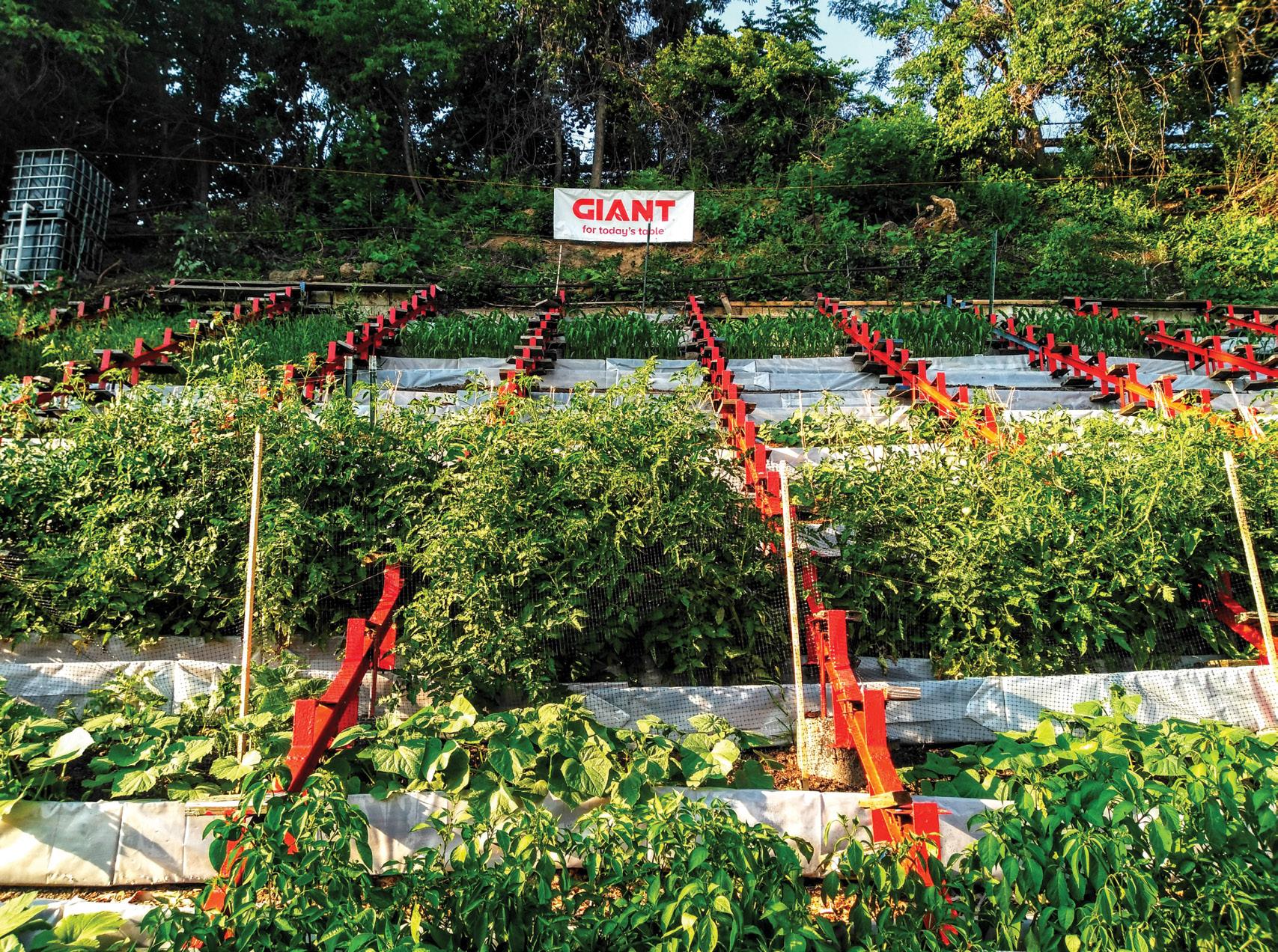
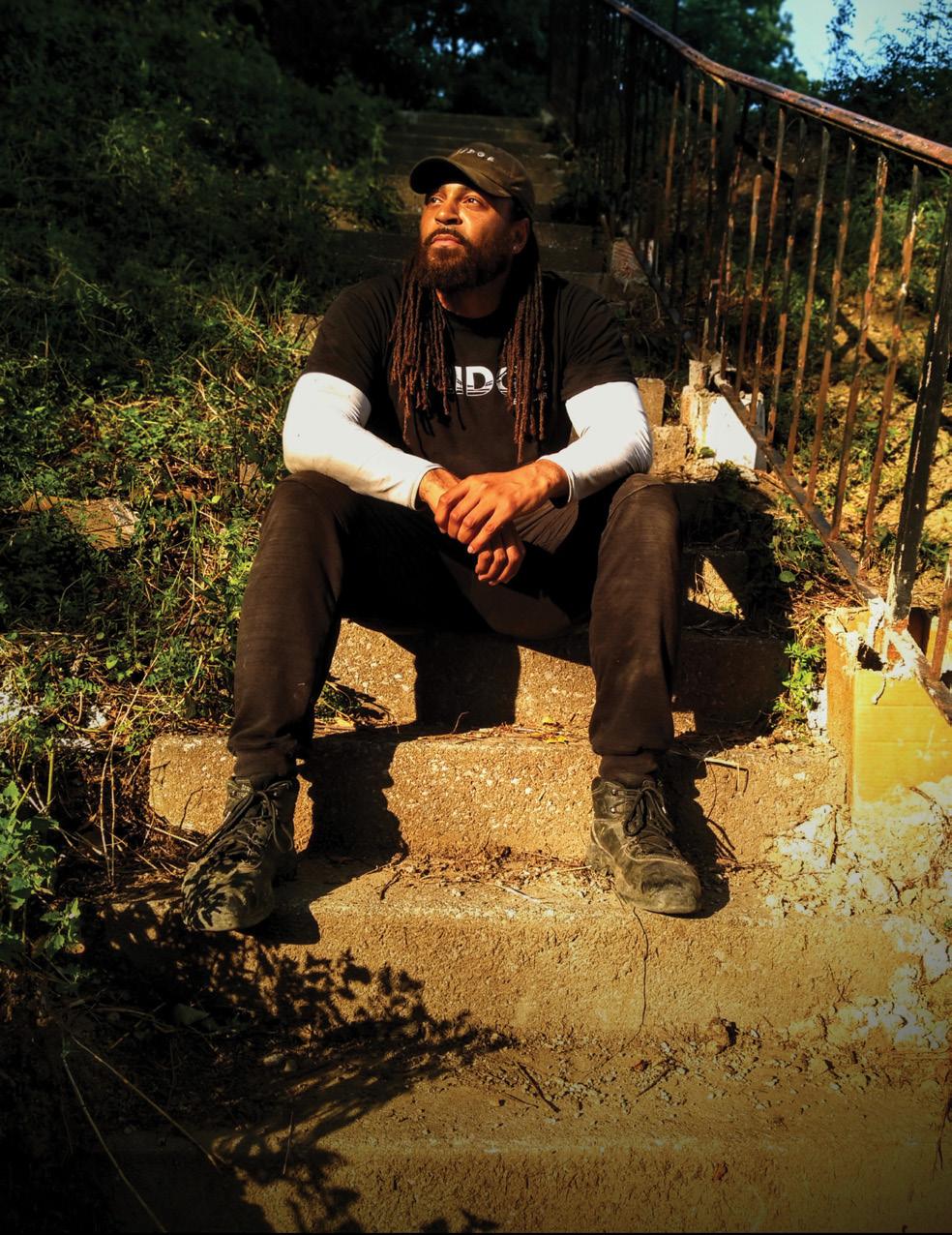
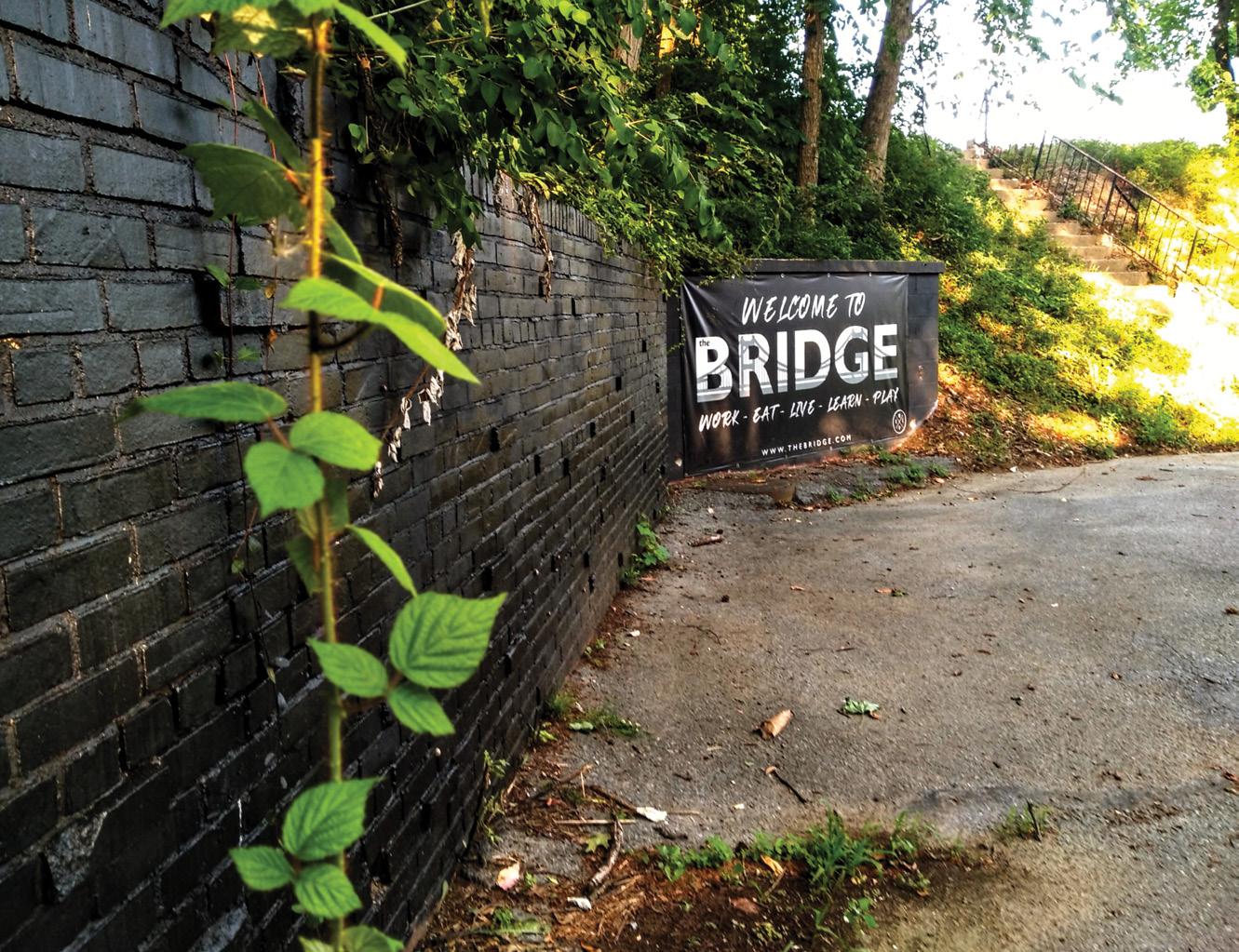
The Bridge, continued from Page 19
But along with making things happen in his hometown, Gilliam’s organization has eyes on several cities in the Commonwealth, such as Erie, Williamsport, and Philadelphia. When asked if there’s a possibility of taking the formula for The Bridge global in the future, as expected, Gilliam is already steps ahead and not just merely talking about major plans, instead taking pride in his embedded hustle and a phrase – “Being about that action” - he often recalls hearing from his friend and former teammate all pro running back, Marshawn Lynch. “We’ve already been in discussion with teams overseas,” he adds, with a sense of pride one can almost feel through the filters of a Zoom conference call.
Another motivational phrase Gilliam lives by are “points of pain.” He’s quick to point out the importance of sustainability and education and self-sufficiency, which, if lacking in forgotten communities, can lead to negative outcomes. But there is nothing negative relayed during a conversation with Gilliam because his plans are far deeper than urban renewal. In fact, one can assume he’s on a quest for the renewal of the human spirit and hope within the city of Harrisburg. With a timeline boosted by a recent grant totaling 4 million dollars, Gilliam is set to have The Bridge - and all its phases - completed sometime during the year 2026. “There’s one grocery store in the city limits of Harrisburg,” Gilliam says, with a twinge of shock regarding this sobering fact. “Higher density and more disposable income are what grocery stores look for,” Gilliam adds. So, it’s easy to see why Gilliam is developing a 170-unit community where individuals and families can thrive in an urban setting. And not only will they thrive, but they will also have useful resources at the ready. The next phase, a community hub and event space known as the JEDI Innovation Center, an acronym that stands for Justice, Equality, Diversity, and Inclusion, will help stabilize the ongoing development.
From struggling to adjust to a critical decision about his future, which led to a total immersion in the realm of academics and athletics, then playing football on both college and professional sports’ biggest stages before coming back to his hometown with a grand scheme to help a city in need of something electric and exciting, Gilliam’s journey is one that inspires. “I wanted to return to Harrisburg and do something that was more than just a football camp,” Gilliam said. “I want to make a difference and create positive change.”
When it’s all said and done, the old Bishop McDevitt High School and all its glorious 115,000 square feet will embark on a new chapter on Market Street, one complete with the trappings of ideas that spawned a tremendous reimagining of a structure on its way to furthering its status as an urban icon. 7
For more information on The Bridge and its upcoming events and community outreach programs, follow their progress at www.thebridgeecovillage.com.










